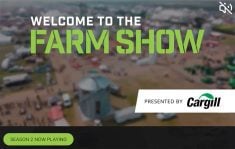There are numerous cattle and bison squeeze chutes on the market. Most are good quality and well built.
Each has its advantages, depending on intended use and size of stock that are handled. Generally speaking, the higher the quality of chute, the higher the price.
There are some excellent ones manufactured in Western Canada, so you don’t have to look far.
I am seldom asked about what chute I prefer and yet if you think about it, veterinarians should be the best authority. They work with all types of chutes on all classes and sizes of livestock.
Read Also

Rural communities can be a fishbowl for politicians, reporter
Western Producer reporter draws comparisons between urban and rural journalism and governance
Veterinarians also use chutes for a variety of purposes, whether it be pregnancy testing cows or examining a lame bull. In large herds, they see chutes being used under intense pressure so they know their downfalls and good points.
There are several key factors to consider when selecting a chute.
Make sure that if numerous adjustments are required, they can be accomplished quickly. There is nothing more frustrating than needing wrenches and other tools to achieve this.
Scissor-type chutes are an advantage because no adjustments are needed.
Head capacity is a key component. Do you need it wide enough for large bulls and yet small enough for young calves? Few have this range and in my experience few can hold a mature bull. With necks wider than their heads, hydraulic chutes are the only ones that will consistently hold bulls.
If considering a head gate, find out whether it can be set as a self-catch and what percentage of cattle will break out.
Some have cables or chains that allow both sides of the head catch to swing simultaneously. These may be prone to breaking.
Also, watch that the catch mechanism cannot be thrown open by a cow tossing its head. Some older chutes were bad for this, but most new ones have guards to prevent it.
Straight-sided chutes are better for restraining young calves. As well, cows are less likely to get their legs outside the chute, where the risk of injury increases.
Is the head gate and squeeze mechanism easy to use and release? Some are not well designed and you will find yourself exhausted after processing 200 head and will need two people to release the squeeze mechanism.
Accessibility to the animal is important. Try to predict your most common uses.
Purebred breeders need good access to the underside of bulls for semen testing, making head capacity more critical.
Feedlots need excellent head restraint for implanting, and superior access to the neck area for vaccinating and other injections.
If the chute will be used for caesarean sections or other surgical procedures, make sure there is good access through the sidebars, which might also need to be removable.
Most new chutes have side releases, which allow for sorting and act as an escape for downed animals.
Chutes can often be selected for left or right hand release, so make sure you select the one most appropriate for your facility.
Backdrop gates are probably a chute’s least-used component. Because they are heavy and require another arm to operate, I see most in the locked up position, pulled out or broken.
Some manufacturers have built drop gates out of aluminum and counter weigh them to make operation easier.
The best idea I have seen in this regard is a sliding gate attached to the back of the chute, which is easy to operate and can be locked out of the way if not in use.
Another manufacturer has a scissor-type back gate that is also easy to operate.
Flooring is critical to avoid slipping. It should be made of steel to prevent rotting. Ensure floor bars are well anchored so livestock can grip them with their hoofs.
Some manual chutes can be operated from the back. This is nice because the operator is not in a position to spook the cattle.
Some use ropes and pulleys instead of levers to insure nothing is sticking out to injure operators or passersby.
Palpation cages need to be safe with good locking mechanisms. Several manufacturers have chutes with cages as a complete unit. This is especially good if moving is necessary several times a year.
Making the back door solid will minimize cattle trying to push forward when waiting their turn.
All chutes made for bison are built strong. Crash gates are an absolute necessity.
If you are looking for a dual-purpose chute, I suggest a bison chute, but choose one that allows natural light because cattle will tend to move through easier.
I cannot stress enough the importance of getting advice from your veterinarian before buying a chute. It will be a few minutes well spent.
Roy Lewis is a veterinarian practising in Westlock, Alta.














